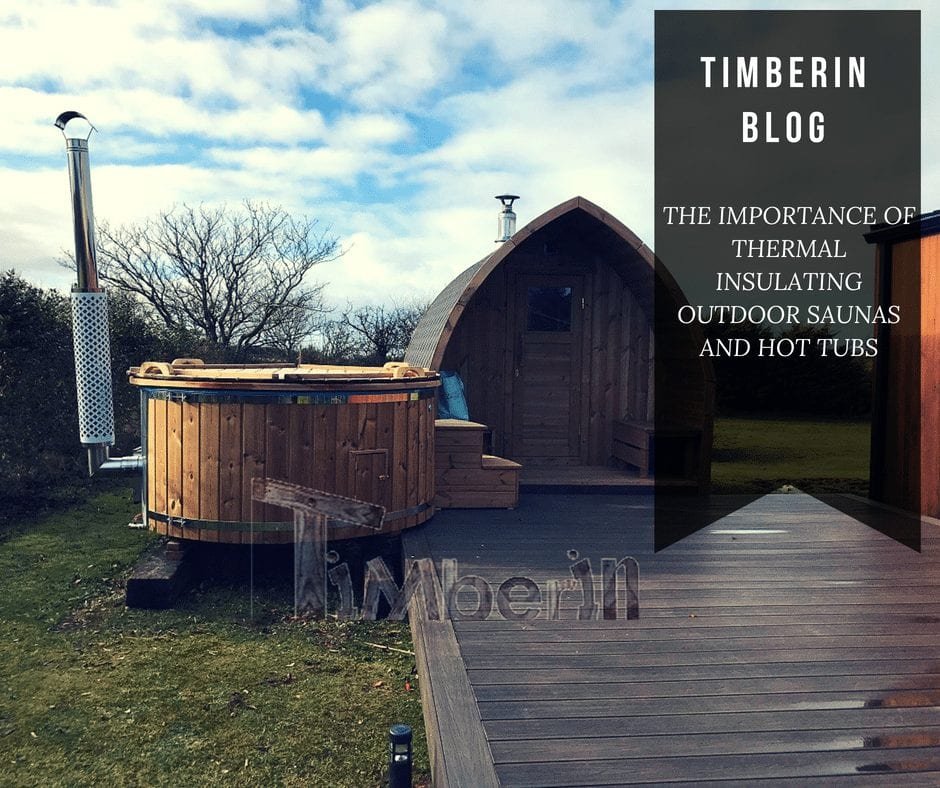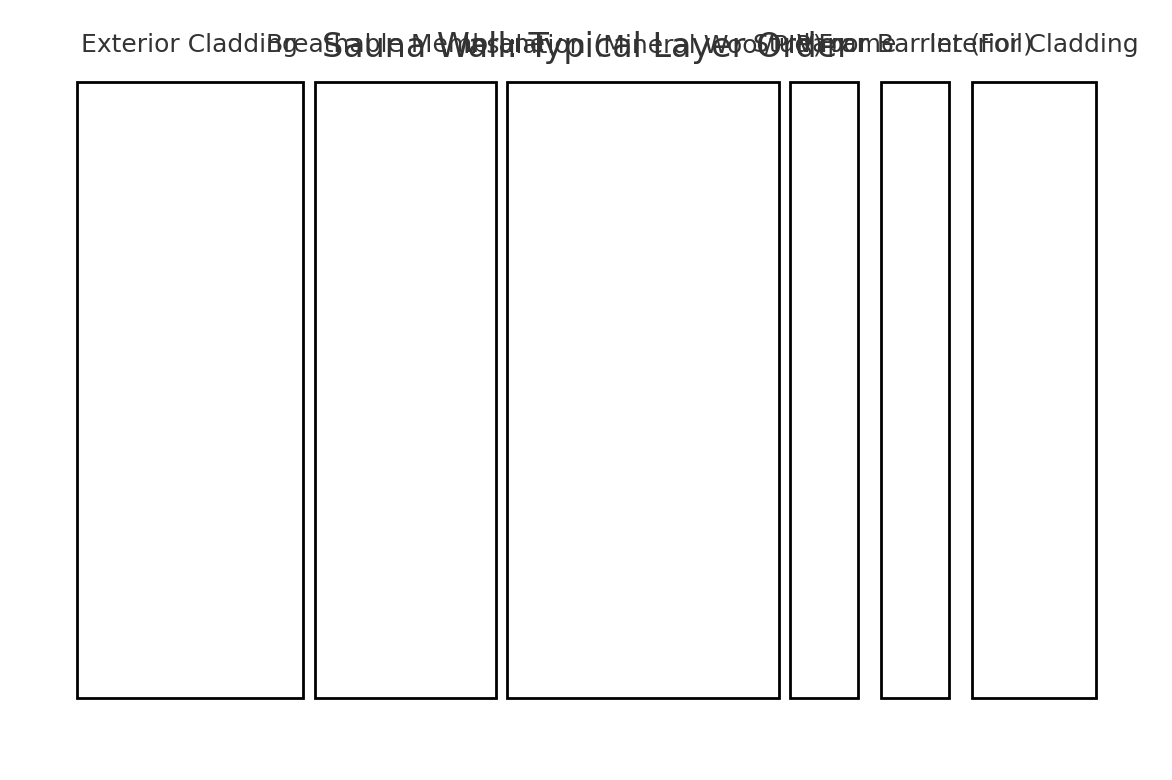
🔥 Why Insulation Matters
- Better heat retention — Slows heat transfer through walls, roof, and floor so the heater works less and sessions stay stable.
- Faster warm-up — A well-insulated structure reaches target temperatures quicker, even in cold weather.
- Moisture protection — A sealed foil vapor barrier limits condensation in the wall cavity, reducing mold and rot risk.
- Lower operating costs — Use less electricity or wood to maintain heat, saving money over the life of the unit.
- Longer lifespan — Reduced thermal stress and moisture ingress help the building envelope last longer.
Planning a winter build or upgrades? Read Do Outdoor Saunas Work in the Winter? for extra cold-weather tips and Winter Hot Tub Care for freeze protection and efficiency.
🧱 Best Materials for Saunas & Hot Tubs
Mineral Wool (Rock Wool)
Excellent temperature resistance, non-combustible, and stable under humidity. Always pair with a sealed foil barrier.
PIR / Foil-Faced Rigid Boards
High R-value per thickness and integrated foil facer. Ideal where wall depth is limited. Ensure boards are rated for higher temperatures.
Vapor Barrier (Aluminum Foil)
Installed on the warm side of the assembly to stop water vapor from reaching cold surfaces. Seal every seam, corner, and penetration.
Choosing timber or comparing cabin types? See Best Wood for Outdoor Hot Tubs & Saunas and compare heat approaches in Infrared Sauna: Pros & Contras. If you’re planning a built-in spa, read our sunken hot tub guide for insulation around pits and decks.
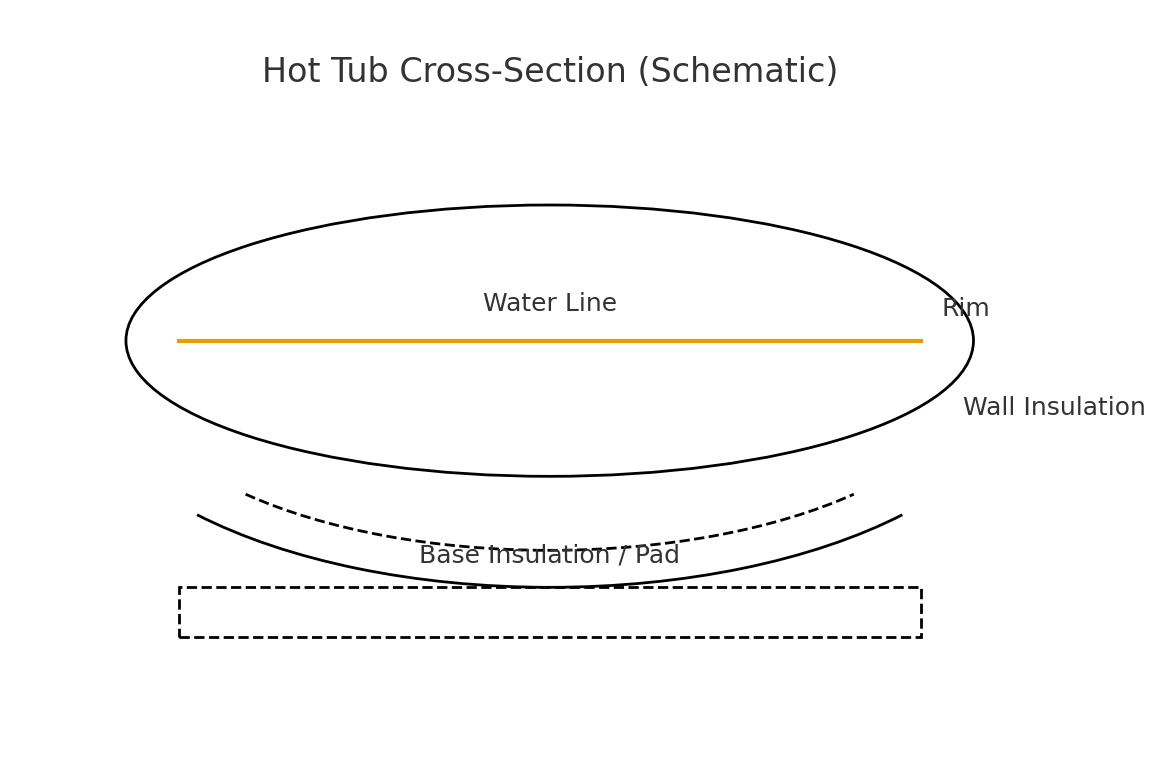
🏗️ Design Tips that Save Energy
- Prioritize roof and upper walls where heat accumulates.
- Break thermal bridges at studs, corners, and fasteners using continuous foil facer or battens.
- Seal doors and glazing with quality gaskets; consider double-glazed windows.
- Vent smartly — provide controlled fresh air without uncontrolled leaks.
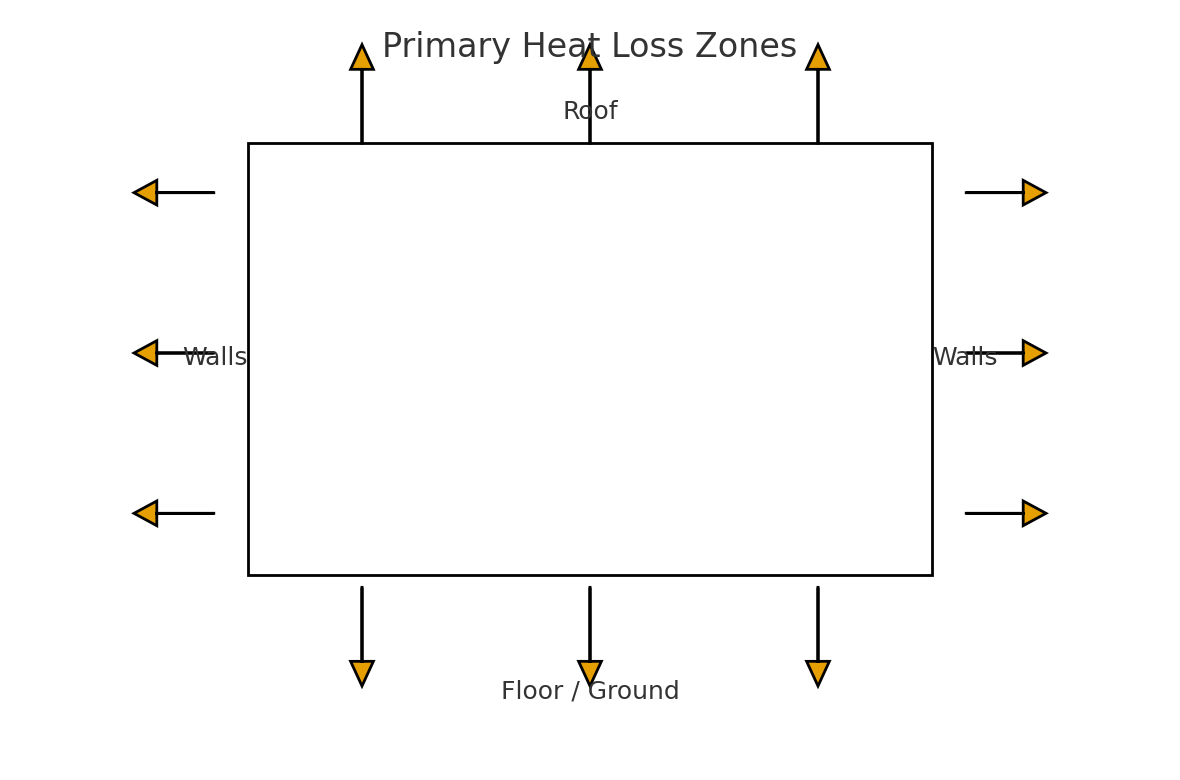
🔧 How to Install Insulation (Step by Step)
- Audit heat loss: measure surfaces and identify gaps, joints, and penetrations.
- Cut and fit insulation: avoid compression and voids; friction-fit or board-fit snugly.
- Add foil vapor barrier: install on the warm side; tape seams and seal all edges and penetrations.
- Re-clad interior: reinstall interior cladding; ensure vents and heater clearances meet manufacturer guidance.
- Test & monitor: perform a trial heat-up; check for drafts, cold spots, or condensation and correct.
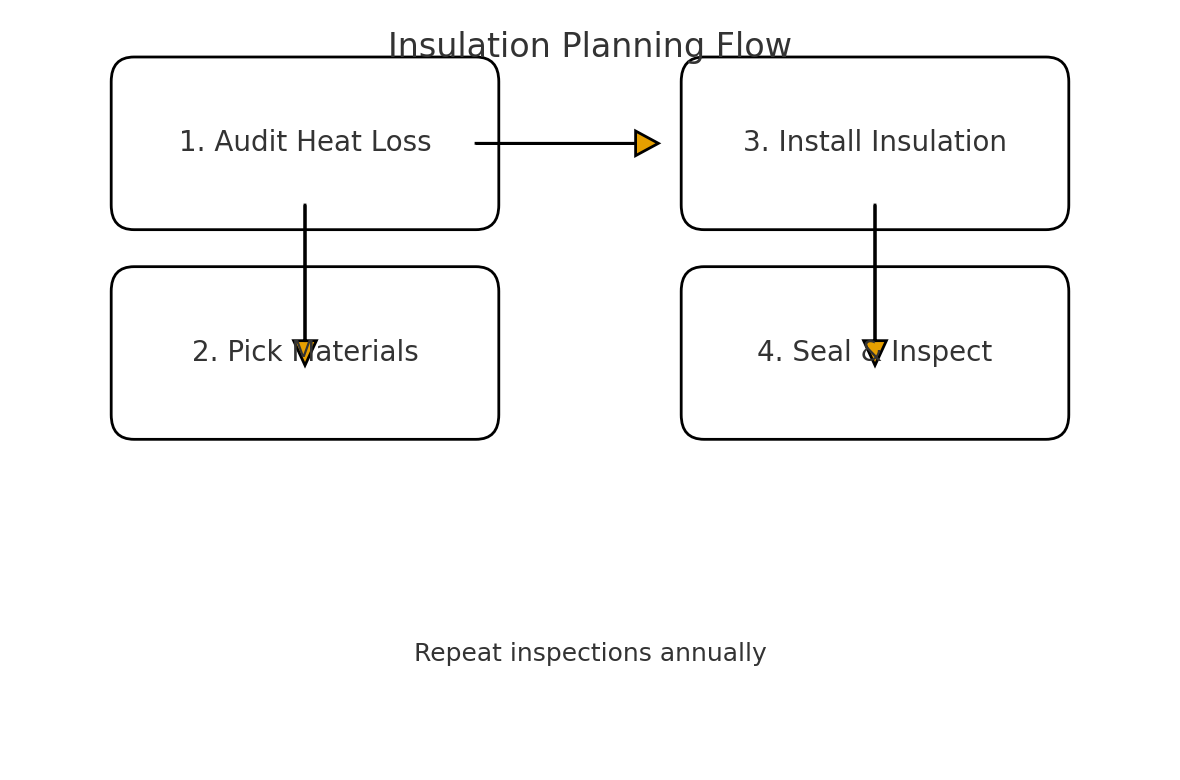
🛁 Hot Tub-Specific Insulation Notes
Fully wooden tubs can’t be insulated within the wall staves themselves, but hot tubs with polypropylene or fiberglass liners can incorporate wall, base, and lid insulation effectively. Typical approaches use polystyrene (polypropylene shells) or polyurethane foam (fiberglass shells), with 4 cm average thickness—more in walls and base. For examples and photos, see insulated models in our product posts and gallery. For ongoing water quality and efficiency, review hot tub water care options.
🧭 Related Guides (Internal Links)
- Guide to Building an Outdoor Sauna
- Outdoor Sauna Problems & Solutions
- Outdoor Garden Sauna Maintenance Guide
- Infrared Sauna Pros & Contras
- Do Outdoor Saunas Work in the Winter?
- Winter Hot Tub Care
- Best Wood for Outdoor Hot Tubs & Saunas
📌 Final Thoughts
Insulation isn’t just an upgrade—it’s a must-have for outdoor saunas and hot tubs in most climates. Get the basics right (layers, sealing, ventilation), and you’ll enjoy faster heat-ups, stable sessions, and lower bills for years. Keep it efficient with seasonal checks and smart maintenance.

